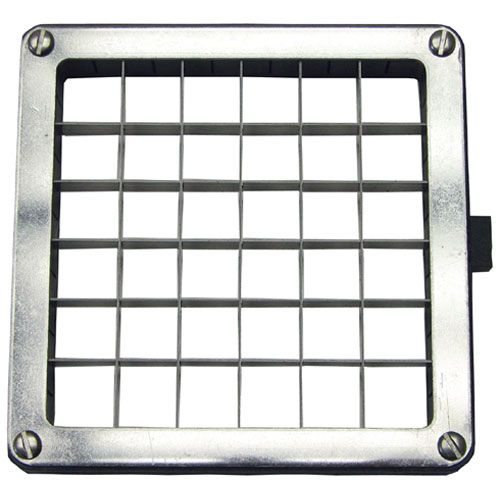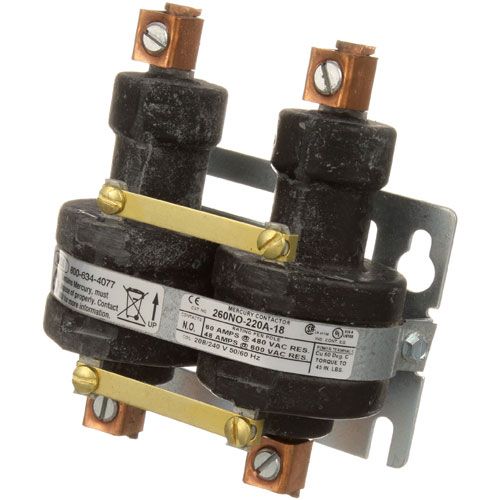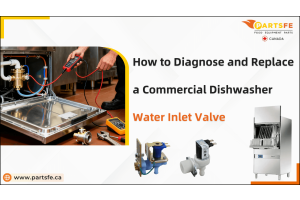Troubleshooting Your Lincoln Impinger Pizza Oven Like a Pro
A properly working Lincoln Impinger pizza oven and having the right replacement parts on hand are essential to keeping your kitchen running smoothly and your customers happy. Like any piece of equipment, your oven can experience issues such as uneven cooking, slow conveyor movement, or unexpected shutdowns that disrupt service. The good news? You don’t always need a technician to fix these problems. With some basic knowledge, a few simple tools, and quality Lincoln parts, many common issues can be quickly diagnosed and resolved on-site. This guide will help you troubleshoot your Lincoln Impinger oven like a pro by covering typical problems, their causes, and practical solutions. Save time, reduce downtime, and keep those pizzas coming out perfectly every single time.
Understanding the Basics of Your Lincoln Impinger Pizza Oven
Before you troubleshoot your oven effectively, it's essential to understand how it functions. These Lincoln Impinger Oven parts are designed for high-efficiency cooking using impingement technology, which forces hot air directly onto the product for faster, more even results.
Key Components of the Lincoln Impinger Oven
-
Conveyor Belt System: Moves pizzas and other items through the cooking chamber at a controlled speed, ensuring even cooking from start to finish.
-
Control Panel: The Oven control panel allows operators to adjust temperature, conveyor speed, and direction. Misconfigured settings here often lead to cooking inconsistencies.
-
Heating Elements (Gas or Electric): Provide the necessary heat to cook the food. Malfunctions can cause undercooking, overcooking, or no heat at all.
-
Air Fingers: Direct high-velocity hot air onto the food, which speeds up cooking time and ensures uniformity.
-
Ventilation System: Maintains proper airflow and removes excess heat and vapors, preventing overheating or smoke buildup.
Why This Matters
Knowing how your Lincoln Impinger oven works helps you quickly spot problems and fix them, saving time, reducing downtime, and avoiding costly repairs.
How Understanding Your Oven Helps You
-
Faster Diagnosis: You’ll be able to identify issues, like uneven cooking or conveyor belt problems, more quickly and accurately.
-
Targeted Troubleshooting: You can identify the underlying cause of a malfunction by knowing the function of each component.
-
Minimized Downtime: The faster you recognize and fix the problem, the sooner your kitchen gets back on track.
-
Cost Savings: Solving minor issues on your own can save on repair bills and prevent more serious damage.
-
Improved Food Quality: When your oven is running correctly, your food cooks evenly and consistently, keeping customers happy.
In short, a solid grasp of your oven’s core components isn’t just helpful—it’s essential to keeping your kitchen efficient, your staff productive, and your service uninterrupted.
Common Issues Encountered with Lincoln Impinger Ovens
Lincoln Impinger ovens are essential in busy kitchens, but they can encounter common oven pizza issues that affect performance. Recognizing these problems early allows for faster troubleshooting and keeps your pizza production on track.
-
Uneven Cooking: Foods may be undercooked in some areas and overcooked in others, often due to incorrect temperature settings, faulty heating elements, or blocked air vents disrupting airflow.
-
Conveyor Belt Malfunction: Wear, motor failure, or drive system issues can cause the belt to stop or move inconsistently, impacting cooking times and product quality.
-
Temperature Fluctuations: Caused by faulty thermostats, control panel errors, or problems with the gas or electric heating system, leading to inconsistent cooking.
-
Oven Shutdowns or Failure to Start: Electrical faults, sensor failures, or safety interlocks being triggered can prevent the oven from operating.
-
Excessive Smoke or Odors: Often the result of food debris buildup, grease accumulation, or ventilation problems that need cleaning or repair.
-
Unusual Noises: Noises like grinding, screaming, or rattling may be signs of worn bearings, loose parts, or problems with the conveyor motor.
-
Control Panel Errors: Faulty or unresponsive controls may cause incorrect settings or prevent proper operation.
-
Airflow Blockages: Dust, grease, or debris can clog air fingers or vents, reducing the efficiency of the impingement system.
Understanding these typical problems enables you to troubleshoot more rapidly, maintain consistent cooking outcomes, and keep your oven operating properly.
Step-by-Step Troubleshooting and DIY Fixes for Common Lincoln Impinger Pizza Oven Problems
When your oven has issues, a clear Lincoln Impinger pizza oven troubleshooting guide can save time and money. Follow these simple DIY steps to fix common problems and keep your oven running smoothly.
Lincoln Impinger Pizza Oven Won’t Heat up
Issue: The oven fails to reach or maintain the set temperature, resulting in undercooked food.
Cause: Faulty heating elements or blocked air fingers reduce heat output.
DIY Fixes:
-
Check and adjust temperature settings on the control panel.
-
Check for damage to the heating elements and replace them as needed.
-
Clean air fingers thoroughly to remove grease and debris blocking airflow.
-
Inspect electrical connections to heating elements for loose or damaged wires.
-
Verify gas supply (for gas ovens) or power source to ensure proper fuel/electric flow.
Lincoln Impinger Pizza Oven Conveyor Belt Stops or Moves Irregularly
Issue: The conveyor belt may halt unexpectedly or move unevenly, disrupting cooking times and food consistency.
Cause: Worn, misaligned belt or motor/drive system issues disrupt belt movement.
DIY Fixes:
-
Check for wear or misalignment on the conveyor belt, then repair or realign it.
-
Check the motor and drive connections for loose parts or unusual noises.
-
Tighten or Replace any worn-out or broken parts.
-
Lubricate conveyor motor bearings if accessible and per manufacturer guidelines.
-
Ensure the conveyor speed settings on the control panel are correctly set.
Temperature Fluctuations or Inconsistent Cooking in Lincoln Impinger Pizza Oven
Issue: The oven’s temperature varies unpredictably during operation, causing uneven cooking results.
Cause: Faulty thermostat, sensors, or airflow obstructions cause heat variations.
DIY Fixes:
-
Test and replace faulty thermostats or temperature sensors.
-
To remove error codes, reset the control panel.
-
Clean vents and ensure proper airflow by removing blockages.
-
Inspect and clean the oven’s ventilation fan and filters.
-
Check for proper calibration of temperature controls according to the Lincoln pizza oven manual.
Lincoln Impinger Pizza Oven Won’t Start or Shuts Off Unexpectedly
Issue: The oven either doesn’t power on or shuts down abruptly due to electrical or safety system faults.
Cause: Electrical faults, blown fuses, or triggered safety switches interrupt power.
DIY Fixes:
-
Verify power supply and check fuses or circuit breakers.
-
Inspect safety switches and door sensors for faults and replace if needed.
-
Reset the oven after making sure all connections are tight.
-
Test the main control board for visible damage or error codes.
-
Verify that the latch sensor is correctly engaged and that the oven door is completely closed.
Safety Reminder: To prevent electrical dangers, always unplug the oven before doing any repairs or inspections.
Check out this guide on fixing a broken heating element in a commercial oven to learn how to diagnose and replace oven components safely and effectively.
When to Call a Professional Technician for Repair
While many minor oven problems can be fixed on your own, certain issues require professional expertise. Electrical faults, ongoing heating failures, or repeated shutdowns are complex problems that can worsen if not handled by a trained technician. DIY repairs without proper knowledge may cause more damage or create safety risks.
Know when to call a professional technician for Lincoln pizza oven repair:
-
The control panel is unresponsive or shows error codes that won’t reset.
-
The conveyor belt has major mechanical damage or motor malfunctions.
-
Persistent burning smells or smoke even after thorough cleaning.
-
Gas problems, such as leaks or unstable flames.
-
The oven keeps shutting off or losing power despite troubleshooting efforts.
Turning to an expert ensures your oven is repaired safely and efficiently, reducing downtime and costly future repairs. When in doubt, always prioritize professional help to protect your equipment and ensure kitchen safety.
Preventive Maintenance Tips to Keep Your Lincoln Impinger Pizza Oven Running Smoothly
Regular preventive maintenance helps keep your Lincoln Impinger oven efficient and reliable. Simple, consistent care can prevent costly repairs and ensure consistent cooking performance.
-
Daily Cleaning: Start each day by thoroughly wiping down all oven surfaces and removing any food debris. Focus on cleaning the air filters, as grease buildup can block airflow and reduce cooking efficiency.
-
Conveyor Belt Check: Inspect the conveyor belt daily to ensure it moves smoothly without slipping or visible damage. Early detection of wear prevents costly breakdowns and maintains consistent cooking times.
-
Weekly Inspection: Examine electrical connections and heating elements once a week for corrosion, wear, and damage. Clean air filters or vents during this time to ensure proper airflow throughout the oven chamber.
-
Safety Component Testing: Test door sensors, safety switches, and control panels regularly to confirm they function correctly. Proper operation prevents unexpected shutdowns and maintains oven safety.
-
Monthly Lubrication: Follow the manufacturer’s guidelines to lubricate motor bearings and conveyor components. Proper lubrication reduces friction, prevents excessive wear, and helps extend the life of your oven’s moving parts.
-
Temperature Calibration: Use a reliable oven thermometer monthly to verify temperature accuracy. Recalibrate the oven controls as needed to ensure consistent cooking results.
-
Maintenance Log: Keep a detailed record of all maintenance activities and repairs. Tracking these helps identify recurring problems early and speeds up troubleshooting, reducing downtime.
Following these preventive maintenance steps will keep your Lincoln Impinger oven running smoothly and reliably for years.
Refer to this ultimate guide on how to clean a TurboChef oven to keep it in top condition.
Troubleshooting your Lincoln Impinger pizza oven like a pro means understanding its key parts and common issues. Regular inspections help catch problems early, preventing costly repairs and downtime. Many issues can be fixed with simple DIY steps, but knowing when to call a professional is crucial for safety. This balanced approach keeps your oven running efficiently and ensures consistent cooking results. Mastering troubleshooting saves time, reduces expenses, and lets you focus on making great pizzas your customers love.
FAQs
Why does my pizza oven keep going out?
Your oven may be shutting off due to a faulty thermostat, safety switch, or gas supply interruption. It’s also possible that airflow is restricted by grease buildup or blocked air fingers.
How to reset a Lincoln Impinger oven?
To reset your oven, turn it off, wait about 30 seconds, and switch it back on., Use the Lincoln pizza oven reset button to clear any error codes. Just be sure to follow the instructions in your user manual.
What do I do if my oven keeps shutting off?
First, check the power supply, door switches, and airflow for blockages. If the issue persists, the problem may involve internal components and should be inspected by a qualified technician.











